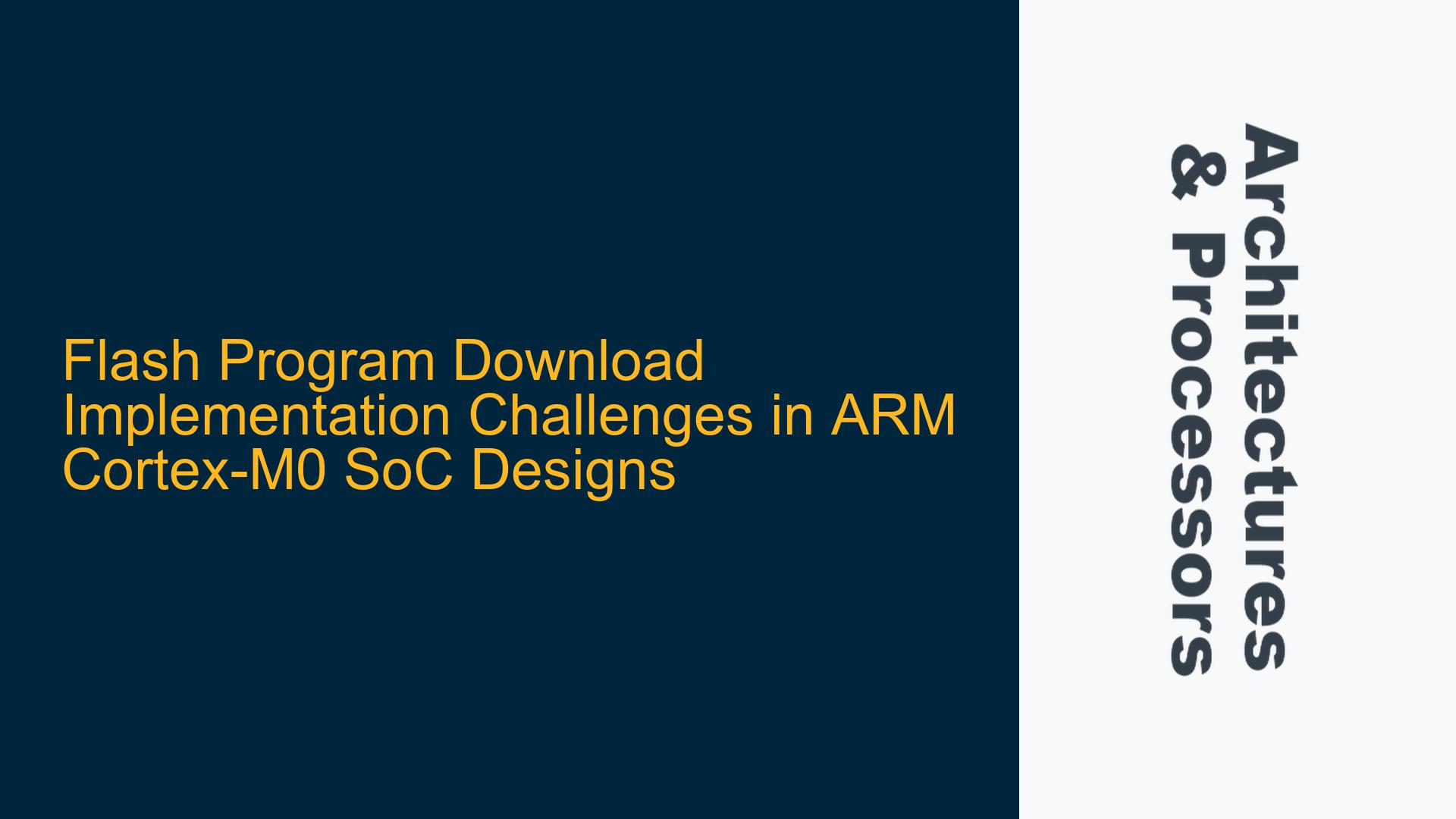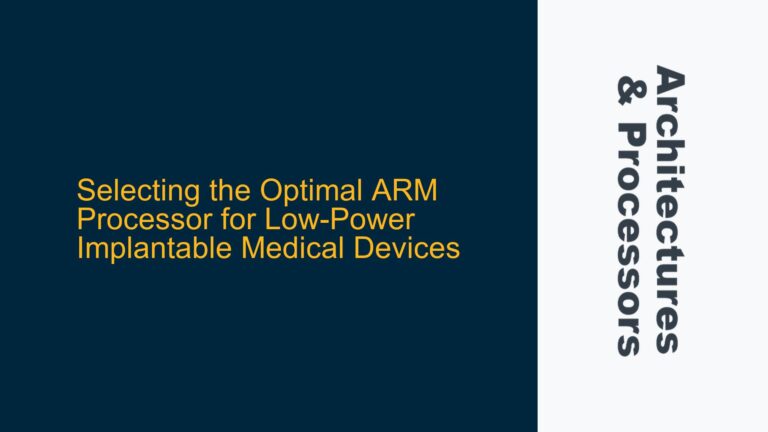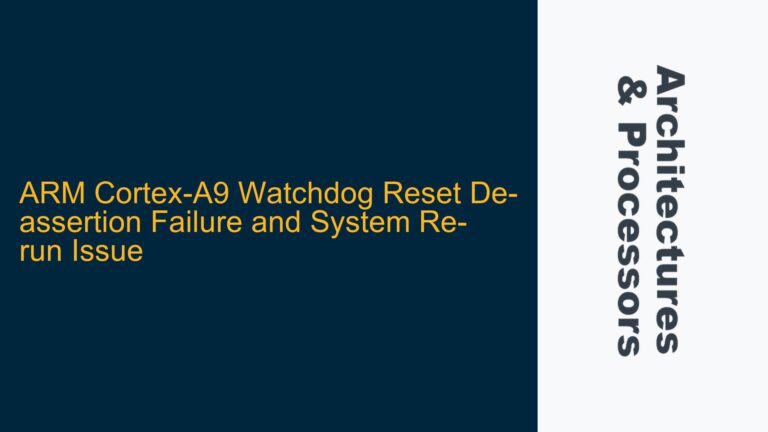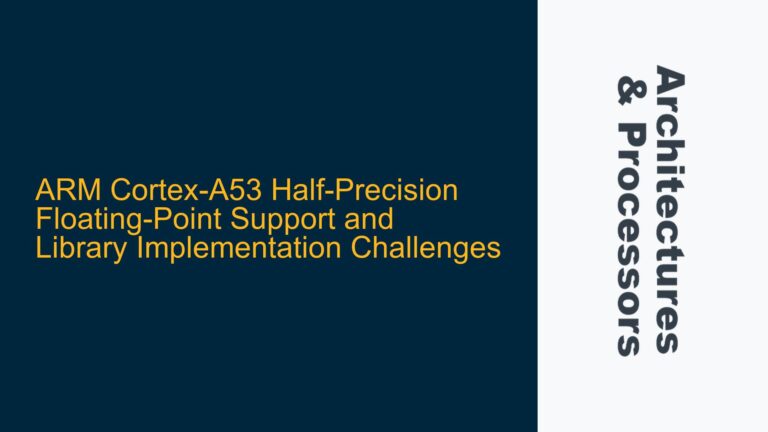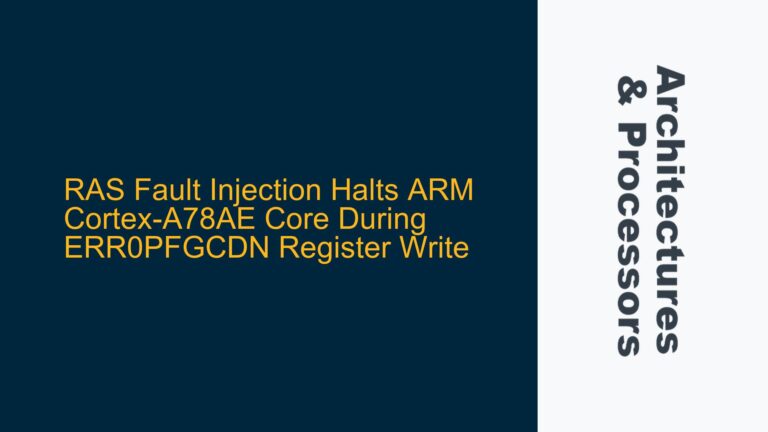Flash Program Download Mechanism in ARM Cortex-M0 SoC
The flash program download mechanism is a critical aspect of ARM Cortex-M0 SoC designs, particularly when integrating non-volatile memory for program storage. The process involves transferring program code from an external source, such as a debugger, into the flash memory of the SoC. This mechanism is essential for both development and production phases, as it allows for firmware updates and debugging. However, the implementation of this mechanism is not straightforward and involves several system-level considerations.
In the context of an FPGA-based prototype, the flash memory is often modeled as a RAM block, which simplifies the initial development process. However, this approach does not fully replicate the behavior of actual flash memory in silicon. The primary challenge lies in understanding how the Serial Wire Debug (SWD) interface, which is typically used for debugging, can also be utilized for programming the flash memory. The SWD interface is designed for low-pin-count debugging and provides access to the processor’s memory map, including the flash memory. However, the process of programming the flash memory via SWD requires a specific sequence of operations that are not always well-documented.
The confusion arises from the expectation that the SWD debugger should be able to program the flash memory directly, without requiring the processor to be in debug mode. In reality, the SWD interface can indeed be used to program the flash memory, but this requires a specific flash programming algorithm to be executed by the processor. This algorithm is typically provided by the flash memory vendor or developed as part of the SoC design. The algorithm handles the low-level details of writing to the flash memory, including erasing sectors, programming data, and verifying the written data.
Misunderstanding of SWD Interface Capabilities and Flash Programming Algorithms
One of the primary causes of confusion in implementing flash program download is a misunderstanding of the capabilities of the SWD interface and the role of flash programming algorithms. The SWD interface is primarily designed for debugging purposes, providing access to the processor’s memory map and registers. While it can be used to program the flash memory, this requires the execution of a specific flash programming algorithm. This algorithm is necessary because flash memory has specific requirements for writing data, including the need to erase sectors before programming and the use of specific commands to write data.
In an FPGA-based prototype, the flash memory is often modeled as a RAM block, which does not require these specific operations. This can lead to the misconception that the SWD interface can directly program the flash memory without any additional steps. However, in a real silicon implementation, the flash memory will require the use of a flash programming algorithm to handle the low-level details of writing data. This algorithm is typically executed by the processor, which means that the processor must be running in order to program the flash memory.
Another potential cause of confusion is the lack of detailed documentation on the flash programming process in the ARM Debug Interface and CoreSight Architecture specifications. These documents provide a high-level overview of the SWD interface and its capabilities but do not go into detail on the specific steps required to program flash memory. This can lead to the assumption that the SWD interface can directly program the flash memory without any additional steps, which is not the case.
Implementing Flash Programming via SWD and Addressing FPGA vs. Silicon Differences
To implement flash programming via the SWD interface in an ARM Cortex-M0 SoC, several steps must be taken to ensure that the process works correctly in both FPGA and silicon implementations. The first step is to develop or obtain a flash programming algorithm that is compatible with the specific flash memory being used. This algorithm will handle the low-level details of writing to the flash memory, including erasing sectors, programming data, and verifying the written data. The algorithm should be designed to be executed by the processor, which means that it must be written in a way that is compatible with the processor’s instruction set and memory map.
Once the flash programming algorithm has been developed, the next step is to integrate it into the SoC design. This involves creating a mechanism for the SWD interface to load the algorithm into the processor’s memory and execute it. This can be done by creating a small bootloader that is executed by the processor when it is reset. The bootloader will check for a specific signal from the SWD interface indicating that a flash programming operation is requested. If this signal is detected, the bootloader will load the flash programming algorithm into memory and execute it.
In an FPGA-based prototype, the flash memory is often modeled as a RAM block, which simplifies the initial development process. However, this approach does not fully replicate the behavior of actual flash memory in silicon. To address this, the flash programming algorithm should be tested in both FPGA and silicon environments to ensure that it works correctly in both cases. This may require modifications to the algorithm to account for differences in the behavior of the flash memory in FPGA and silicon.
Another consideration is the use of external memory, such as an SD card or EEPROM, to store the program code. This approach can be used to overcome the challenges of embedding a flash memory macro in the SoC design. In this case, a simple SPI module can be designed to transfer the code from the external memory into an SRAM on power-on. The SRAM can then be multiplexed with the code ROM to provide the program code to the processor. This approach reduces the complexity of the SoC design by eliminating the need for a flash memory macro and the associated power management circuitry.
In conclusion, implementing flash program download in an ARM Cortex-M0 SoC requires a thorough understanding of the SWD interface, the role of flash programming algorithms, and the differences between FPGA and silicon implementations. By developing a compatible flash programming algorithm and integrating it into the SoC design, it is possible to implement a robust flash program download mechanism that works in both FPGA and silicon environments. Additionally, the use of external memory can provide an alternative approach to storing program code, reducing the complexity of the SoC design.
